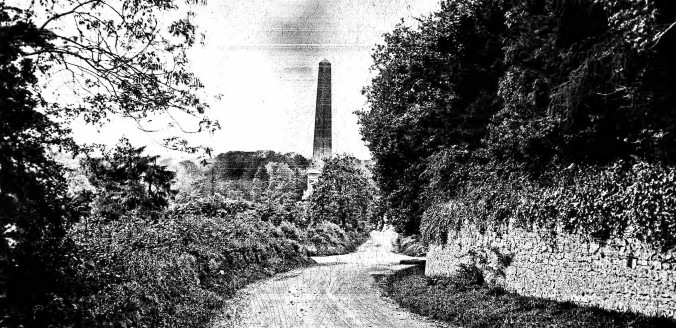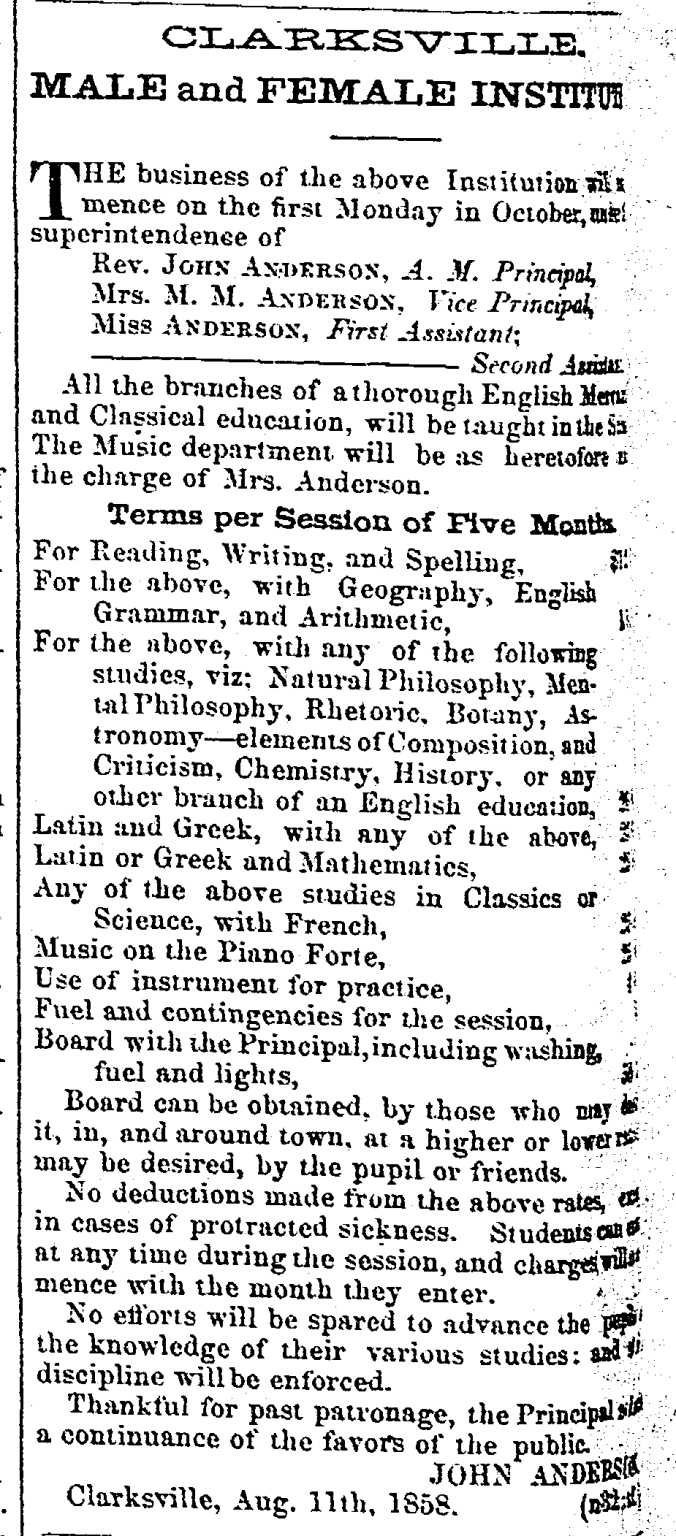Margaret Maria (Tisdall) Anderson is an ancestor of both my mother-in-law and her third cousin, Ross Perot. Born into an affluent Anglo-Irish family, she is not the type of person you would expect to find listed as a music teacher in the 1850 U.S. census, let alone in a place like Red River County, Texas. Yet there she is, with her husband, Presbyterian minister and school teacher John E. Anderson and their five children. Also in the household is her younger brother William Henry Tisdall, age 33, a graduate of Trinity College, Dublin who has left a wife and three children behind in Ireland.

Household of the Rev. John E. and Margaret (Tisdall) Anderson, in the 1850 U.S. census of Red River County, Texas found on Ancestry.com.
Margaret Maria was born 13 Oct 1813 at Rathcoole House in County Louth to Edward Tisdall and his wife Catherine Shiels. Though the name is always spelled Tisdall in Ireland, I believe it must have been pronounced with a long “a,” because it is invariably spelled Tisdale in U.S. records for this family.

Obelisk marking the site of the Battle of the Boyne, Drogheda, County Louth, Ireland, from the Lawrence Collection of photographs at the National Library of Ireland, found on Ancestry.com.
The Tisdalls seemed to enjoy entertaining. The Belfast Newsletter of 3 Sep 1833 reported that “Rathcoole House, in the county of Louth, the seat of Edward Tisdall, Esq. has been for some time the scene of much festivity and amusement. On Tuesday, the 27th ult., his family and a number of visitors from Dublin and elsewhere, at present enjoying his hospitality, were joined by a large party of the gentry of the surrounding neighborhood, the Officers of the 34th, quartered at Drogheda…”

John Anderson and Margaret Maria Tisdall’s marriage was announced in the Belfast Newsletter of 1 Jun 1834. They left for the United States soon afterwards, arriving in New York City 28 Jul 1834 on the ship Russell Baldwin. According to family lore, Margaret’s father was originally extremely upset that she married a Presbyterian minister, but eventually forgave her, and shipped her piano to her in the U.S. before he died in 1838.
Rev. Anderson served several Presbyterian congregations before the family finally settled in Texas. Their moves can be followed through the birthplaces of their children: Catherine Shiels b. 1836 and Margaret b. 1842 in New Jersey; Thomas Tisdale Carrington b. 1845 in Virginia; Jane Martha b. 1847 in Arkansas; and John Edward b. 1849, in Clarksville, Red River County, Texas.
When we think of education in the old West, we usually imagine a one-room schoolhouse with a single teacher handling pupils of all ages, teaching the basics of reading, writing and arithmetic. In researching my mother-in-law’s many pioneer ancestors, I am often amazed at how quickly people founded fairly sophisticated educational institutions on the frontier.
The Clarksville Male Academy had been established in 1847, before the Andersons arrived in Red River County. Rev. Anderson began teaching there in 1849. He became Principal at some point in the early 1850s, and changed the name to the Clarksville Classical, Mathematical and Mercantile Academy. In 1854 the school absorbed the local girls’ academy, becoming the Clarksville Male and Female Institute, with Margaret as Vice Principal as well as music teacher.

Advertisement appearing in the Clarksville Standard 11 Jun 1859 found on GenealogyBank.com.
Margaret taught music, piano and voice at the evolving school from at least 1850. A newspaper report on the year-end exercises in 1858 said that the musical performances “were such as we have heard no where else in the State, and attest the high qualifications of Mrs. Anderson, the music instructor.”
Margaret died in Clarksville 2 Sep 1863. Her long obituary describes her as an intelligent and refined woman who willingly gave up a life of relative ease, and as a “philosophical Christian” who “enjoyed the tranquil grandeur of a mind thoroughly imbued with natural and revealed religion.”